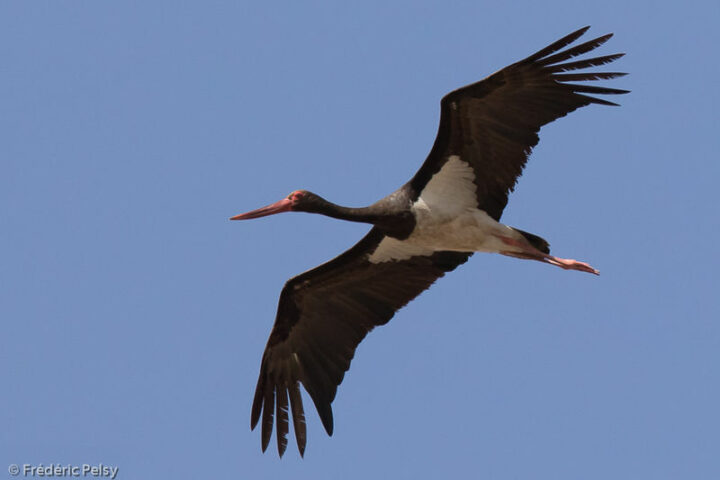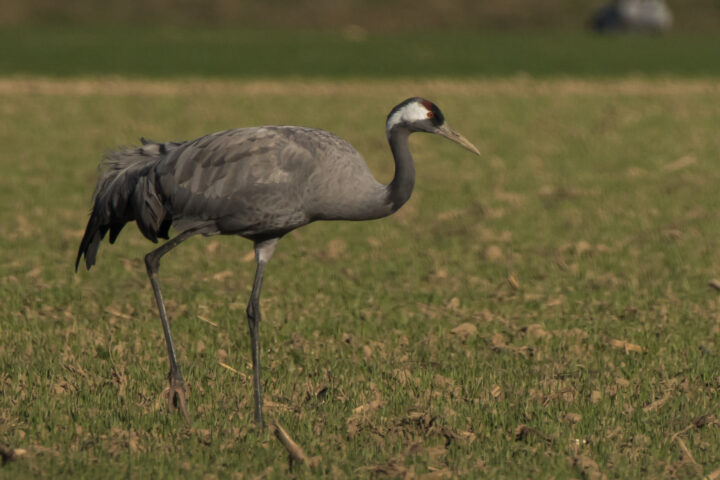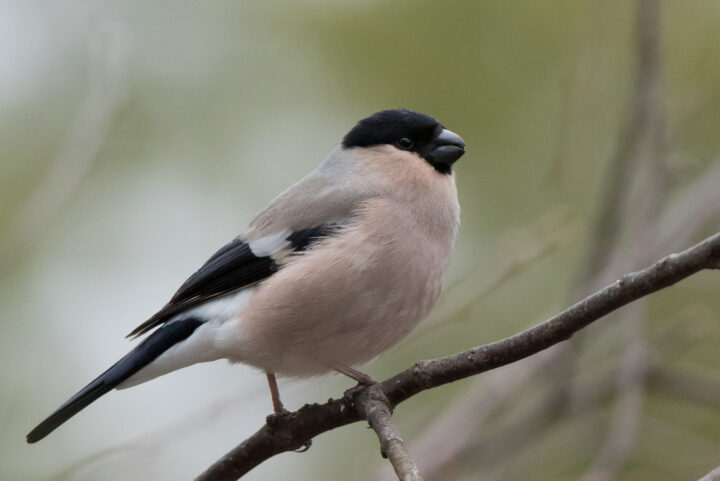European Goldfinch
Carduelis carduelis
Classification
- Order : Passeriformes
- Family : Fringillidae
- Genus : Carduelis
- Species : carduelis
binomial name
- Linnaeus, 1758
Biometrics
- Size : 14 cm
- Wingspan : –
- Weight : 14 to 18 g
Longevity
8 years
DISTRIBUTION

Vocalisation
Typical shouts are “tsi du dut”, “ti pi dit”, a rising “tchuii”, etc. During altercations, a rather discordant whispered cry is emitted in rapid series.
The song is a rather melodious phrase, which has the tonality of the cries that it includes regularly, with rolled notes, accelerations, all very characteristic of the species.
IUCN Conservation status

Share
IDENTIFICATION
The Goldfinch is a small passerine, smaller than a sparrow and easy to recognize. Indeed, the adult has a blood-red face and a large yellow-lemon area on the wing. There is a slight sexual dimorphism which, if one can say, is not obvious. The male has the red of the face which overflows the eye towards the back whereas in the female, the red stops at the level of the eye. The rest of the head is black and white. The dark eye is included in a black loral zone. The beak, regularly conical, is pale pink. The upper part of the body (mantle, back and scapulars) is camel-brown, except for the rump and supra-caudals which are white, which can be seen in the bird in flight. The brown of the top reaches the sides of the breast where it forms two pectoral spots well visible, and the flanks, while the rest of the bottom is white. Wings and tails are black with white spots on the remiges and rectrices. The wide yellow band that cuts the wing in two lengthwise is very visible on the bird in flight. The legs are pink or pinkish depending on the season.
The juvenile can be recognized as a goldfinch by the yellow band on the wing and can be easily distinguished from the adult by the absence of red on the face. In addition, the head and the underside of its body are whitish beige and finely streaked with brown.
The birds of the eastern subspecies, caniceps or subulata, have the head and the top of the body of a rather pale brown-grey.
HABITAT
The Goldfinch is a fairly common bird of open woodlands, whether deciduous or mixed, and can be found in forest edges, clearings and regenerated forests, in wooded steppe, in riparian forests along rivers and lakes, in Mediterranean scrubland and scrubland, in hedgerows, along roadsides, and in human settlements in parks, orchards and wooded gardens. The nesting territory must meet two requirements. It must include high shrubs or trees for the nest and a dense herbaceous layer rich in various seeds for feeding. In this respect, wastelands and other uncultivated areas play an essential role.
THREATS – protection
The Goldfinch is still a common species, not threatened on a continental scale. However, it is certain that the deterioration and the banalization of the country landscapes, the disappearance of many uncultivated zones to the profit of urbanization or of a productive agriculture, could only have a negative effect on the populations of goldfinches in our developed countries. It was once a cage bird and captured for this purpose.
Currently, the species is protected and trapping is illegal. But it is certain that poaching continues in many Mediterranean countries, including European, despite the protection laws. Just think of what happens in Cyprus or Malta every year.
La Gallerie








Find all the walls
15 walls
Place
14-16 Penpoll Road,London
Fresque
Hummingbird by Claire Ward ThorntonPar
Claire Ward-ThorntonOiseau
Ruby-throated HummingbirdPlace
Aknīste – Gārsene – Ausmas,LV-5218 Gārsene,
Lettonie Zemgale
Fresque
Black storksPar
Anda LāceOiseau
Black StorkPlace
Bruxelles BelgiqueFresque
Turtle DovePar
Aurore VegasOiseau
European Turtle DovePlace
Jarrestraße 20,22303 Hamburg,
Allemagne
Fresque
COMMON KESTRELPar
Hanadi ChawafOiseau
Common KestrelPlace
Lisbonne,Portugal
Fresque
Vulture & EaglePar
Tatiana SaumOiseaux
Spanish Imperial Eagle, Cinereous Vulture.Place
Kišpatićeva ul. 12,10000,
Zagreb,
Croatie
Fresque
Common KingfisherPar
Chez 186Oiseau
Common KingfisherPlace
1 Boulevard de Dresde,67000 Strasbourg,
France Grand Est
Fresque
Eurasian CurlewPar
Philippe BaudelocqueOiseau
Eurasian CurlewPlace
Tabor,1000 Ljubljana,
Slovénie
Fresque
Little TernPar
ŠkartOiseau
Little TernPlace
Roodborststraat 18,3083 WB Rotterdam,
Pays-Bas
Fresque
The European RobinPar
Marloes de KiewitOiseau
European RobinPlace
35 Rue du Général Leclerc92130 Issy-les-MoulineauxFresque
Five birds by MantraPar
MantraOiseaux
Common Kingfisher, Barn Swallow, European Goldfinch, Eurasian bullfinch, Lesser Spotted Woodpecker.Place
Place Seigneur de Monlezun,Sempesserre
Fresque
The Red PartridgePar
Adèle RenaultOiseau
Red-legged PartridgePlace
Ss Cyril & Methodius 44,Skopje 1000,
Macédoine du Nord
Fresque
Egyptian VulturePar
Dorotej NeshovskiOiseau
Egyptian VulturePlace
2 Place des Marseillaises,Marseille
Fresque
6 Mediterranean and American birdsPar
FikosOiseaux
Eurasian Hoopoe, Western Black-eared Wheatear, Blue Rock Thrush.Place
299 Avenue de l’Adour,Anglet
Fresque
11 migratory birds of the Basque coastPar
MioSHeOiseau
Common cranePlace
84 Rue du Chemin Vert,Boulogne-sur-Mer





















